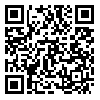
 , Robab Teimouri *2
, Robab Teimouri *2 
 , Samaneh Hossein-Zadeh1
, Samaneh Hossein-Zadeh1 
 , Gita Movallali1
, Gita Movallali1 
 , Poupak Izadi3
, Poupak Izadi3 

2- University of Social Welfare & Rehabilitation Sciences, Tehran, Iran ,
3- Shahed University, Tehran, Iran
Objective: Sensor neural hearing impairments (SNHI) are not curable, and in the optimal situation, the most appropriate method is using hearing aids and aural habilitation. The main purpose of this paper is to investigate the ear symptoms and hearing aid’s complains and also to study the correlation between these two variables. We would like to encourage the therapists to pay more attention to the medical care follow-up and outcomes of aural habilitation.
Materials & Methods: This is a descriptive analytic study. It was executed by a cross-sectional method on 95 SNHL children. Each case was examined by otolaryngologist and middle ears were assessed by Impedance Audiometry. Data were analyzed by Chi- square.
Results: 38% of children who complained from their hearing aids had external otitis media. K Square showed a significant correlation (P=0.002) between external otitis and children’s complains about hearing aids. 33% of children who complained from their ears, had abnormal tympanogram. Again K Square showed a significant correlation (P=0.005) between ear symptoms and abnormal tympanogram.
Conclusion: External and middle ear infections in SNHL are as common as other normal hearing children. It can also be suggested as one of the important reasons in hearing aids dissatisfaction. So, regular otologic examination and audiometric evaluation in SNHL children are seriously recommended.
Received: 25/08/2012 | Accepted: 3/07/2013 | Published: 3/07/2013
| Rights and permissions | |
 |
This work is licensed under a Creative Commons Attribution-NonCommercial 4.0 International License. |
